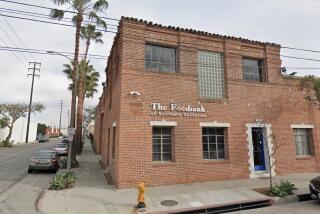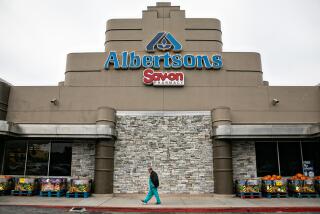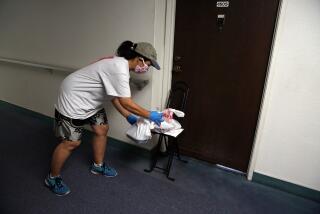Stores Are Cut From Food Stamp Program
- Share via
WASHINGTON — More than 750 grocery stores, liquor outlets and other merchants, many with little or no food on the shelves, were kicked out of the federal food stamp program Friday in the latest crackdown by the Agriculture Department.
Many of the stores were expelled because they fail to meet the government’s rules for selling the proper mix of staple or wholesome foods. Other stores were nonexistent, and up to a hundred are suspected of criminal activity, department officials said.
“For too long, we’ve had stores in the program that sell almost no food, and this must stop,” said Agriculture Secretary Dan Glickman. “None of the stores removed from the food stamp program today help children and families get the food that they need.”
Combined, the 753 stores were collecting $22 million a year in food stamp benefits from low-income Americans and redeeming them for cash from the federal government.
Friday’s actions against the retailers come on the heels of an investigation this summer by Agriculture Department auditors who found that the black market for food stamps is thriving in part because regulators have allowed scores of questionable businesses to accept the coupons.
Their investigation found liquor, video and clothing stores and other small businesses accepting food stamps without any food on the shelves, or else stocked only with potato chips or a handful of food items.
This summer’s sweeps, and Friday’s actions, targeted stores in seven areas: Miami; New York; Washington, D.C.; St. Louis; Chicago; Dallas; and Alameda County, Calif.
All 753 stores have the right to appeal the USDA’s decision to kick them out of the food stamp program, and under current law may continue to accept the coupons while their cases are pending.
The Agriculture Department estimates that trafficking drained $815 million from the food stamp program in 1993, while fraud and errors by caseworkers and recipients added another $1.8 billion to those losses.
In a typical scheme, a food stamp recipient will sell the paper coupons to a retailer for less than face value, generally 50 to 70 cents on the dollar.
Unscrupulous grocers may also purchase food stamps from other stores, wholesalers, route drivers or drug dealers, who exchange cash and contraband for coupons.
More to Read
Sign up for Essential California
The most important California stories and recommendations in your inbox every morning.
You may occasionally receive promotional content from the Los Angeles Times.










